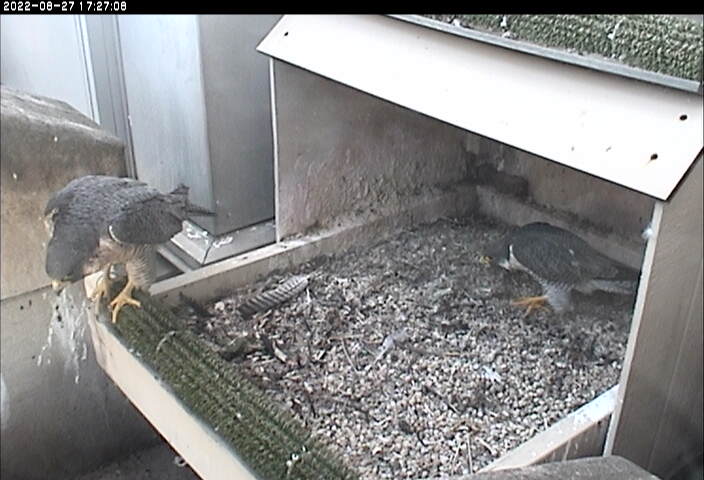
13 September 2022
Peregrine falcons molt to replace all their feathers once a year, but it takes a long time. They can never be flightless, as Canada geese are during their own molt, nor can they lose too many flight feathers simultaneously. Consequently they molt the same tail and wing feather on each side, waiting until the pair is mostly grown in before the next pair drops.
In North America’s mid-latitude temperate zones, peregrines complete their annual molt in 4.5 to 5 months, finishing in September. At the Cathedral of Learning Ecco and Morela are in the home stretch of the bedraggled process.
In the top photo the pair greets each other at the nestbox but mostly they take turns preening on the green perch. In the slideshow Ecco first, then Morela, fusses with flight and body feathers. When Morela shakes three fluffy white feathers fly.
Here are a few ways you can see their molt in progress:
A large wing feather lies discarded on the gravel on 27 August.
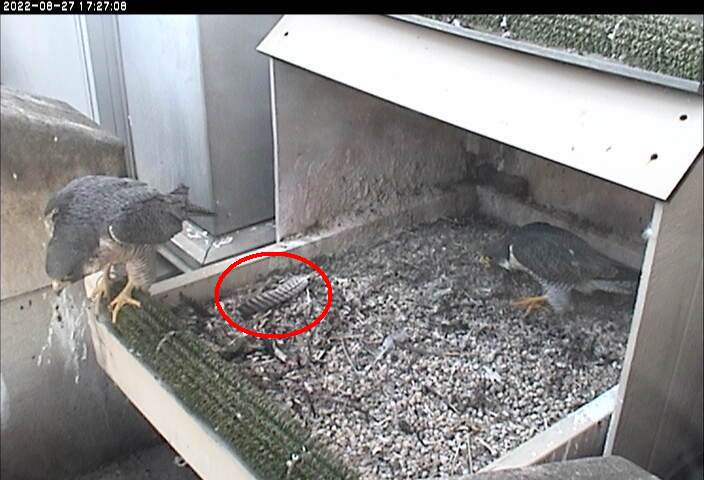
As Ecco stretches you can see tail feathers partially grown in and a small gap in the smoothness of his wing. (The white tips on his new tail feathers don’t line up at the end of this tail.)
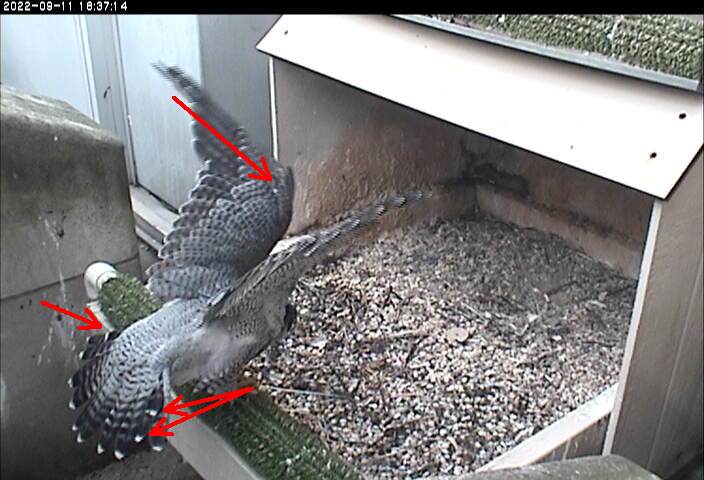
As Morela preens downy feathers stick to her head. When she shakes, three fluffy white feathers fly off.
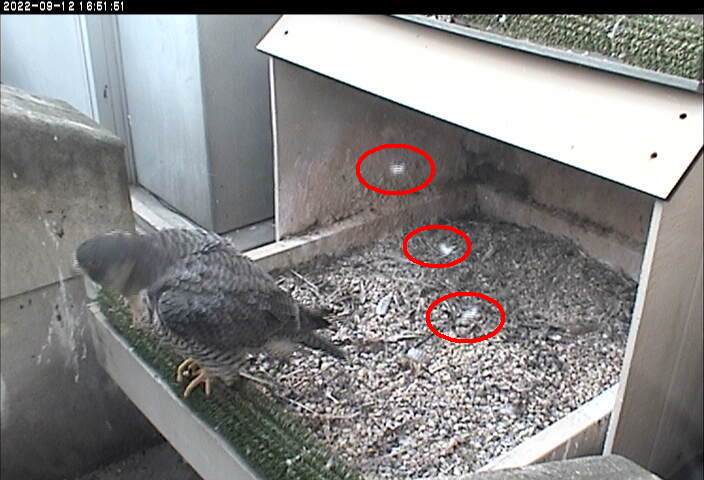
Note the molting in progress on Morela’s wings and tail.
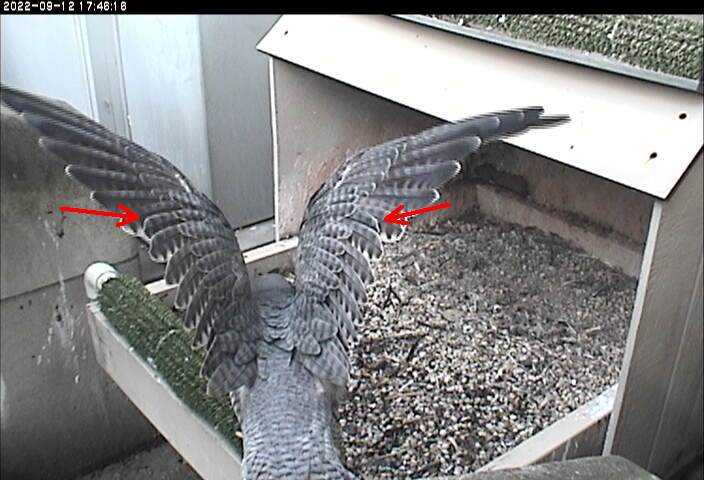
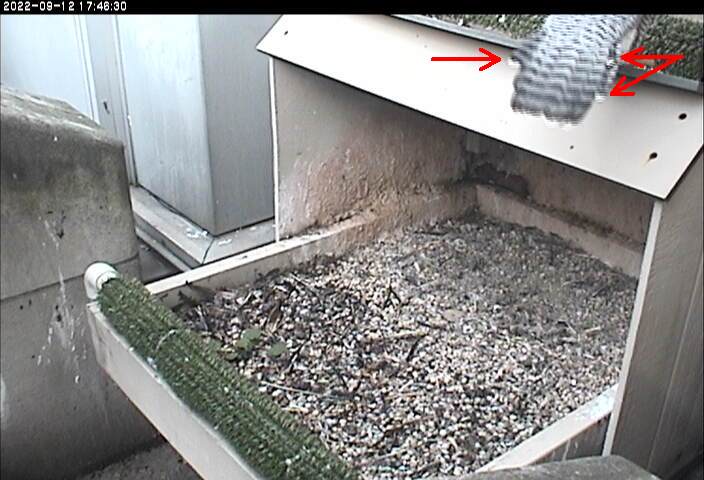
Will Ecco and Morela visit the nestbox as often when they have completely finished molting? Maybe not … until January.
Though the nestbox streaming camera is off for the season, you can see live snapshots at Cathedral of Learning Falconcam Snaphots.
(all photos from the National Aviary snapshot camera at University of Pittsburgh)
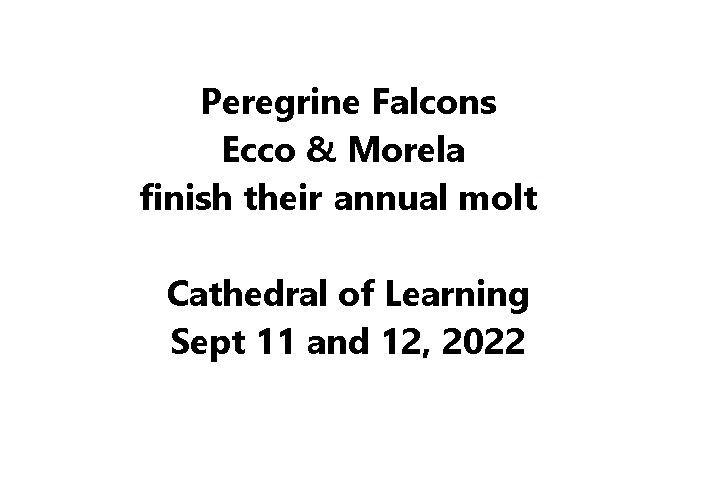
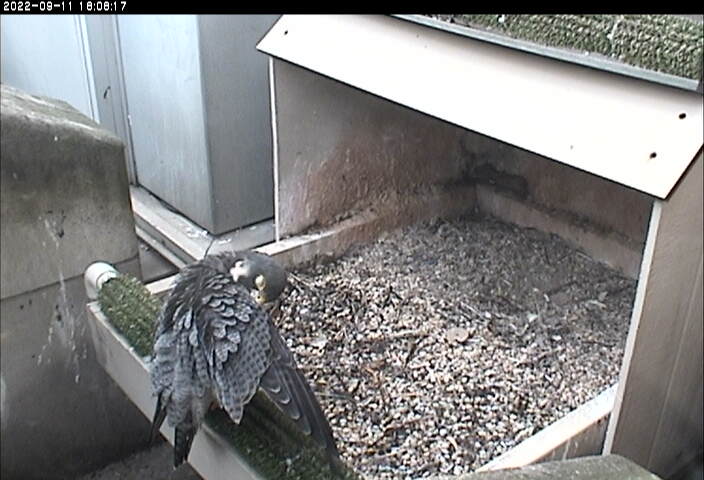
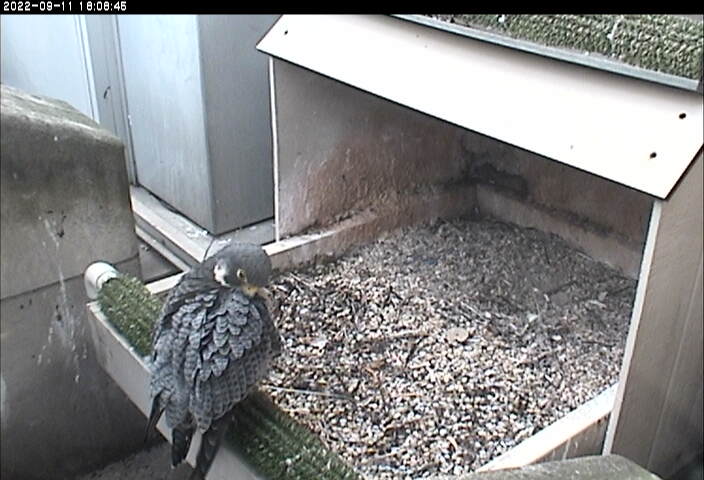
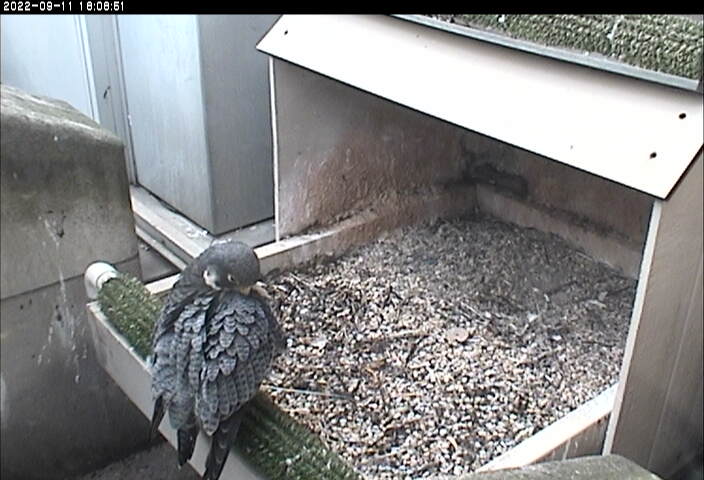
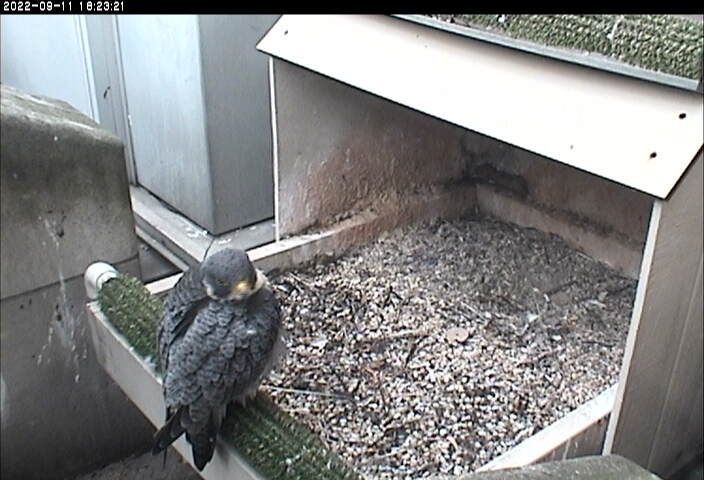
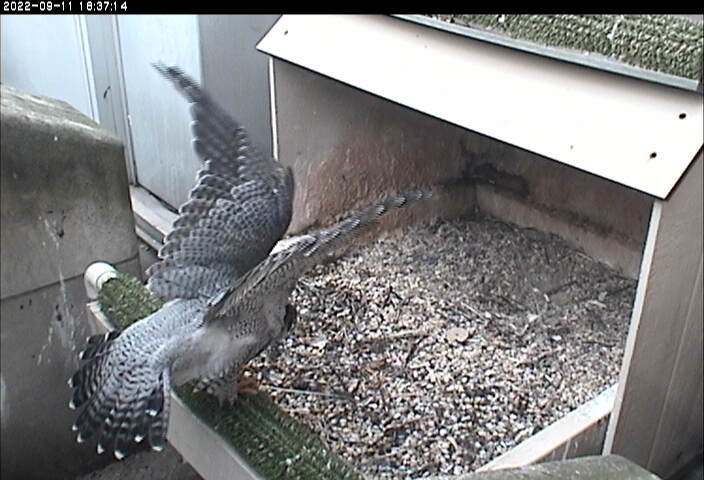
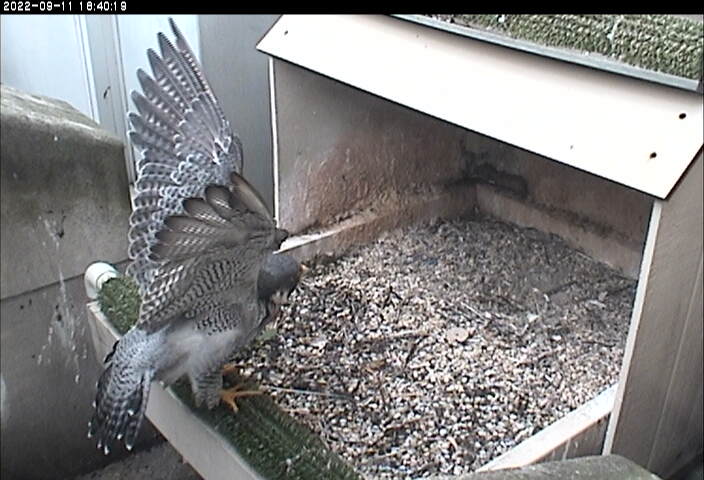
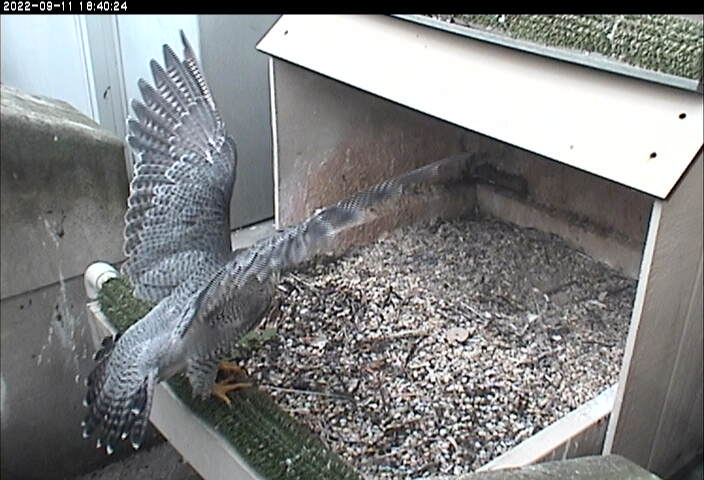
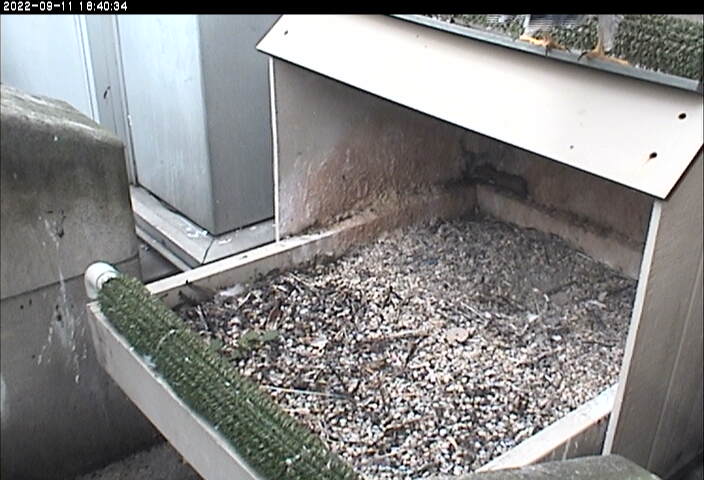
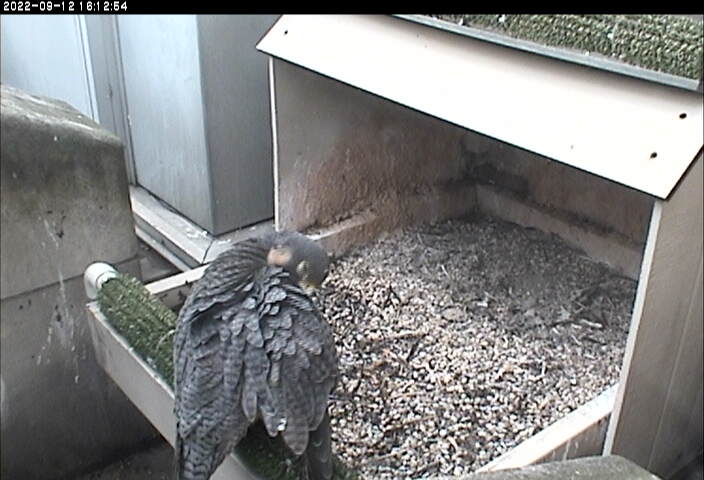
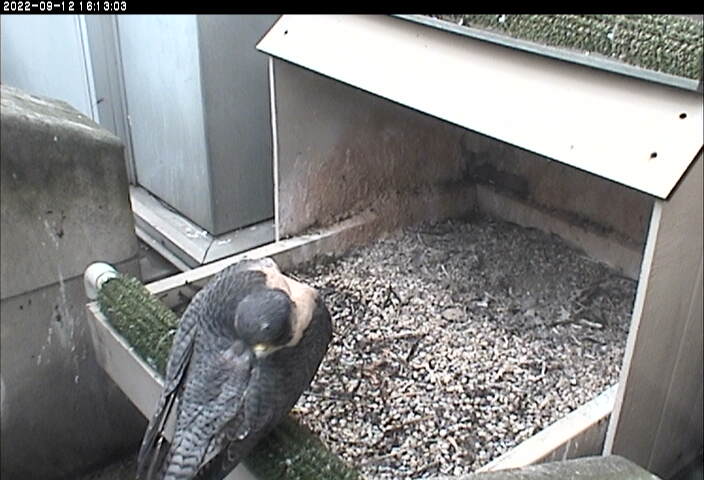
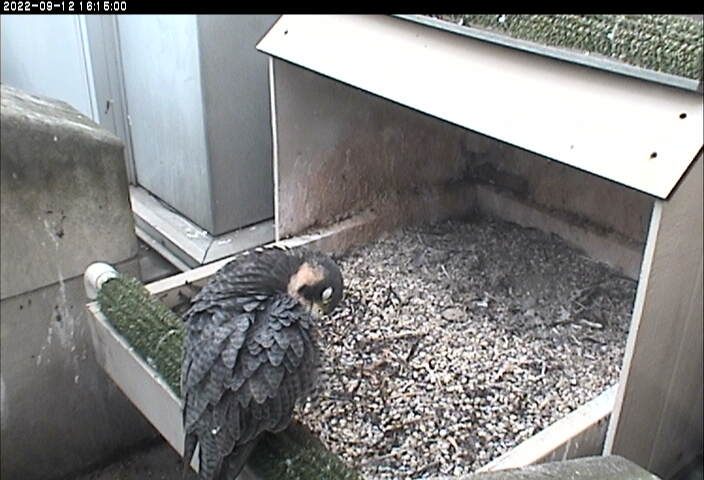
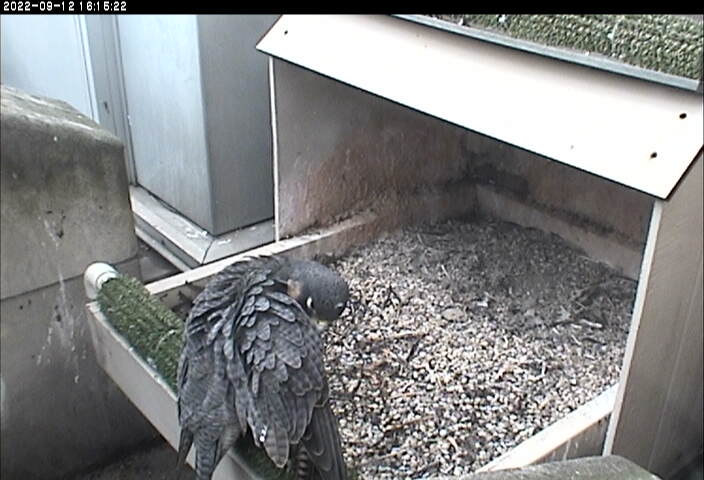
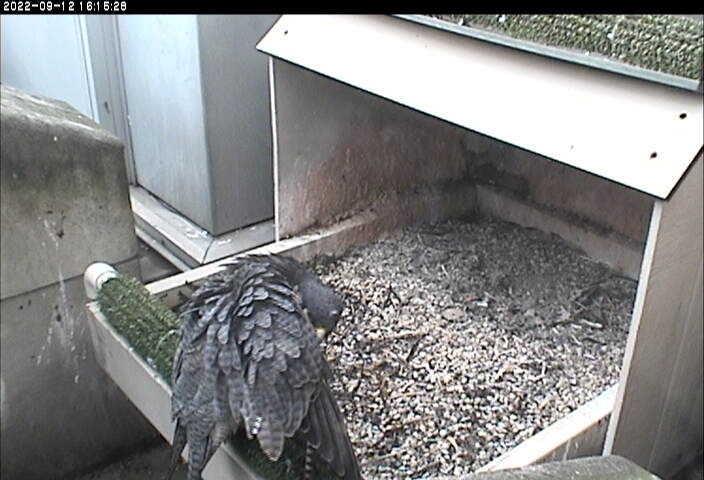
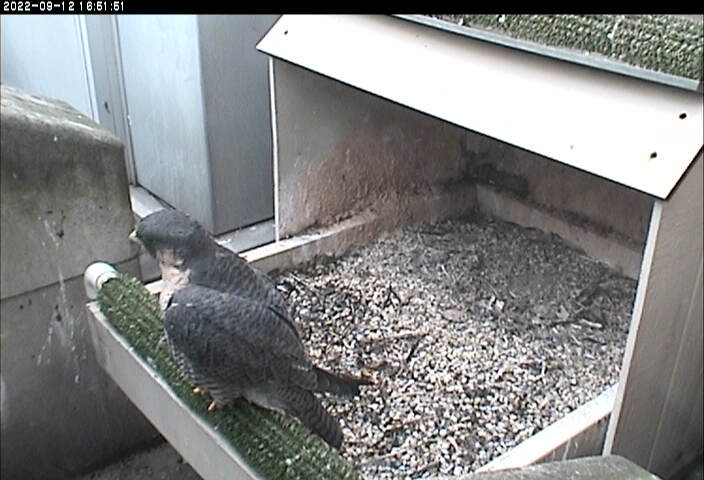
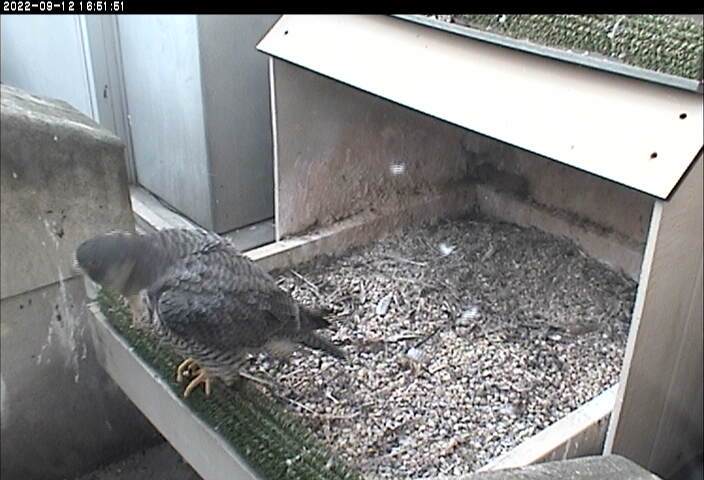
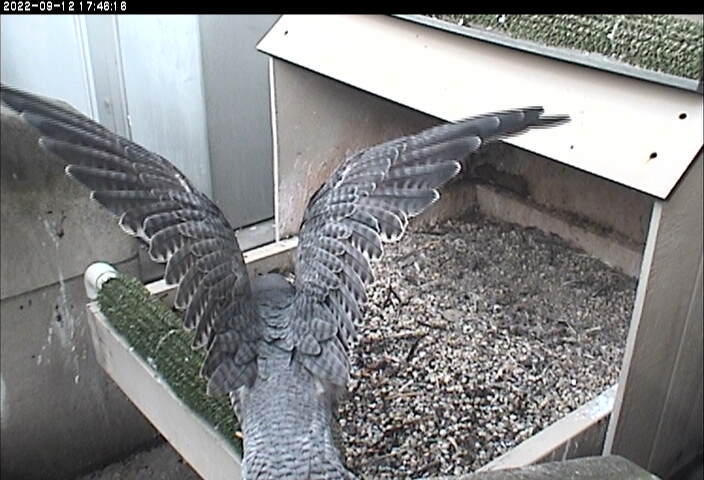
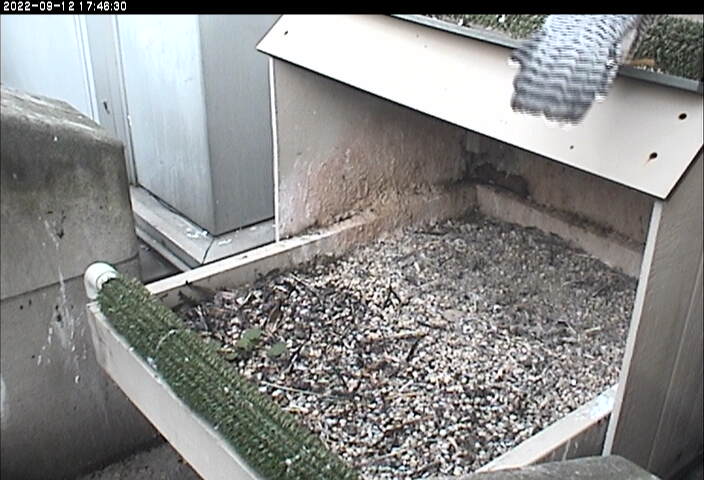

So fascinating and amazing!!